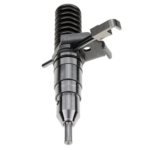Relocating to a new state can be an exciting yet stressful experience. The thought of transporting all your belongings safely over a long distance can be overwhelming. Have you ever wondered how to simplify this process and make your move smooth? One of the most efficient and cost-effective methods for long-distance moves is utilising self-pack shipping containers.
Shipping container removals offer a streamlined solution for moving your possessions across state lines. This method allows you to pack at your own pace and ensures your belongings are securely transported to your new home. This guide will walk you through each step of using them for your interstate move, from the initial packing to the final unpacking, ensuring a hassle-free relocation.
Step 1: Choose the Right Container Size
The first step in your moving process is selecting the appropriate container size for your needs. Containers typically come in two sizes: 20 feet and 40 feet. The size you choose depends on the volume of your belongings. If you’re moving into a small apartment, a 20-foot might suffice. However, a 40-foot would be more suitable for larger homes or bulky items.
Step 2: Prepare Your Belongings for Packing
Before they arrive, organise and prepare your belongings. This reduces the volume you’ll need to move and simplifies the process. Next, gather packing supplies such as boxes, bubble wrap, and tape. Ensure that fragile items are wrapped securely to prevent damage during transit. Proper preparation is critical to a smooth experience.
Step 3: Pack the Container Efficiently
Once your container is delivered, you can begin packing quickly. Start by placing heavy items like furniture and appliances at the bottom of the container. Use moving blankets and ties to secure your items and prevent them from shifting during transport. Fill in gaps with smaller boxes or soft items like pillows to keep everything snug.
Step 4: Secure and Lock the Container
After packing, it’s crucial to secure the container to ensure the safety of your belongings during transit. Use the tie points or rails to fasten your items securely. Once everything is in place, close and lock them with a high-quality padlock. This step adds an extra layer of security and gives you peace of mind that your possessions are safe on their journey to your new home.
Step 5: Schedule the Pickup and Delivery
With your container jammed and secured, the next step is to arrange transportation. Contact your moving service provider to schedule a pickup time that suits your timeline. They will transport them to your new address, allowing you to focus on other aspects of your move. Depending on the distance and your specific requirements, the delivery time may vary, so plan accordingly. For those also needing to transport their vehicle during an interstate move, exploring options with trusted Car Shipping Companies can help ensure a seamless relocation process.
Step 6: Unpack at Your Own Pace
Once they arrive at your new location, you can unpack it. Unlike traditional moving methods, where everything happens in a rush, using a shipping container allows you to take your time. Start with the essentials and gradually unpack the rest. This relaxed approach reduces stress and makes settling into your new home a more enjoyable experience.
Step 7: Return the Empty Container
After you’ve unpacked, the final step is to arrange for the return of the empty one. Most providers offer a grace period, giving ample time to complete your unpacking without feeling rushed. Once you’re done, call your service provider to schedule a pickup. They will collect the empty container, marking the end of your moving process.
Shipping container removals provide an efficient and flexible solution for interstate moves. By following simple steps, you can ensure a smooth and stress-free relocation, whether moving to a small apartment or a large family home. This approach allows you to take control of your move, ensuring your belongings are securely transported and conveniently unpacked at your new destination.









